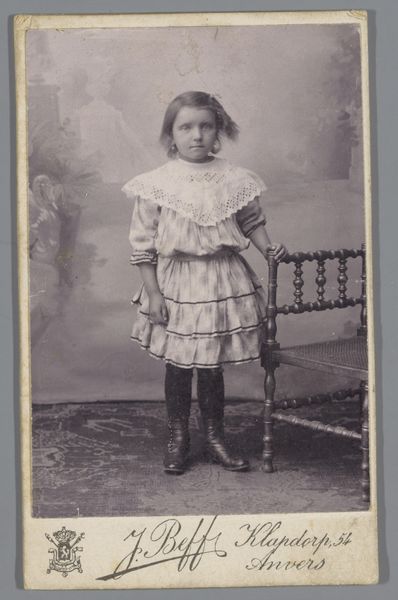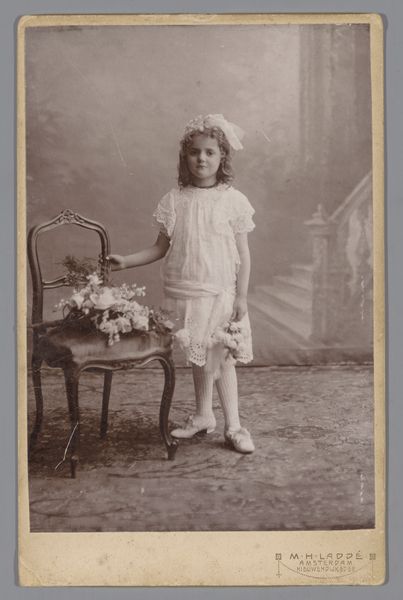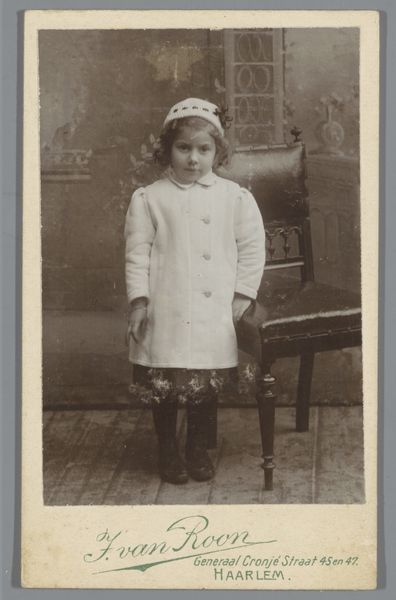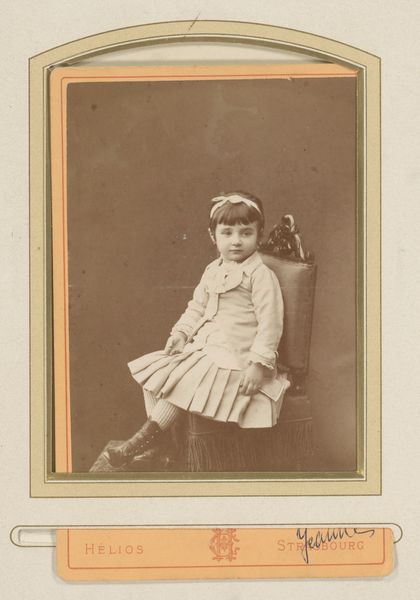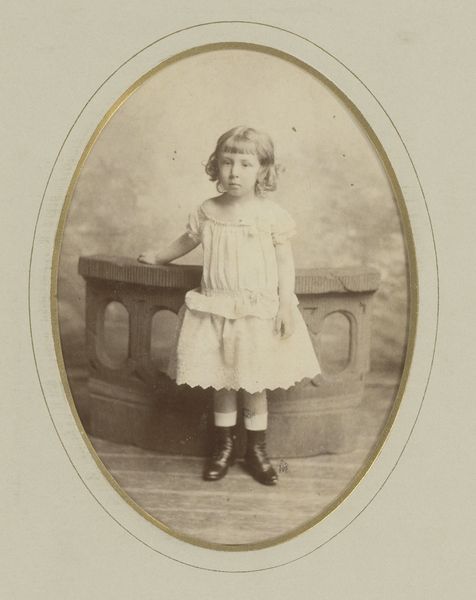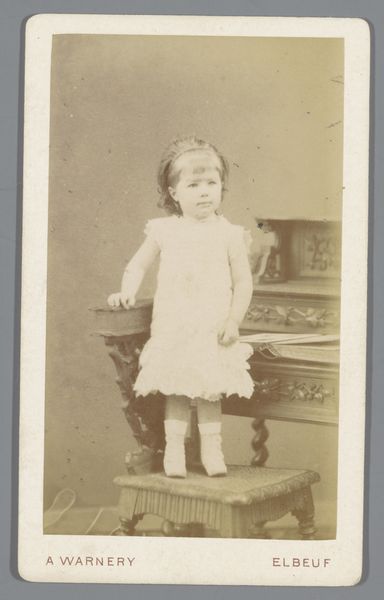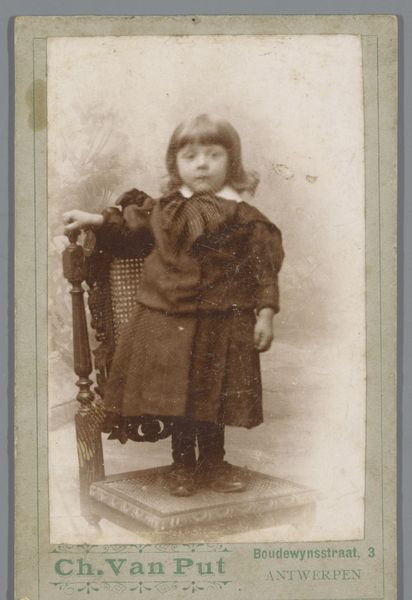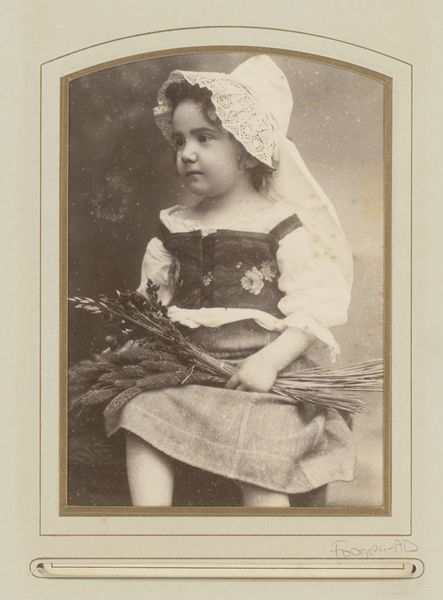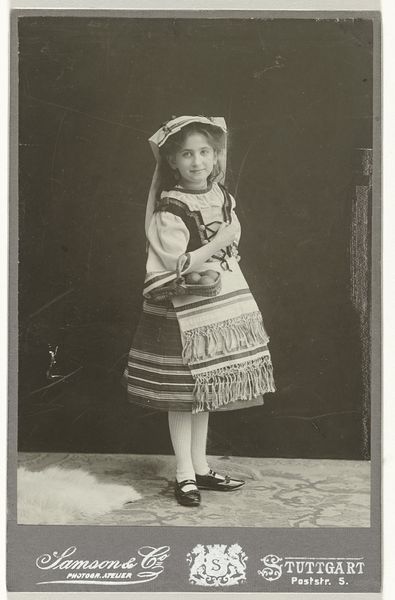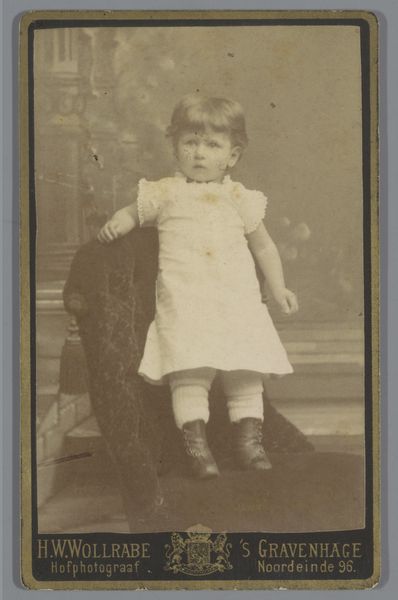
photography
#
portrait
#
pictorialism
#
photography
#
historical photography
#
19th century
Dimensions: height 135 mm, width 95 mm
Copyright: Rijks Museum: Open Domain
Editor: This is "Portret van Raymonde van Hoecke," a photograph potentially from 1899 by P. Fournier. I'm really struck by how posed and formal it feels for a child's portrait. How should we interpret this work in its historical context? Curator: That feeling of formality is key. Consider the late 19th century: photography, though becoming more accessible, still carried the weight of portraiture traditions previously held by painting. Portraits served to document status, lineage, and respectability. Editor: So the photo acts as a social document more than an intimate capture? Curator: Precisely. Think about the context in which photography existed. While cameras became somewhat easier to operate, they still required considerable equipment and technical know-how. This would have been a special occasion. A professional photograph of a young girl like Raymonde reflects the values that Fournier and his upper-class patrons projected. Also, do you notice the sharp focus only on Raymonde's face? Editor: Yes, it accentuates her expression, which is a mix of composure and maybe slight apprehension? Did photographers then manipulate focus the way they do today, to this extent? Curator: Indeed. Pictorialism, the style we see at play here, mimicked the aesthetics of painting and printmaking through manipulation of the photographic process. Blurring details, adjusting tones, and careful compositions allowed photographers to assert artistic control and elevate the medium beyond mere reproduction. What do you take away from that detail? Editor: So, it's not just a picture; it's making a statement about the status of both the subject and the photographer. It is interesting how much posing is being communicated through Raymonde! Thanks! Curator: Exactly. Understanding those historical conventions deepens our understanding. Appreciating that what might seem straightforward in modern terms – a picture of a child – speaks volumes about a particular time and place, the hierarchies and aesthetic values shaping its production. It becomes much more fascinating!
Comments
No comments
Be the first to comment and join the conversation on the ultimate creative platform.

